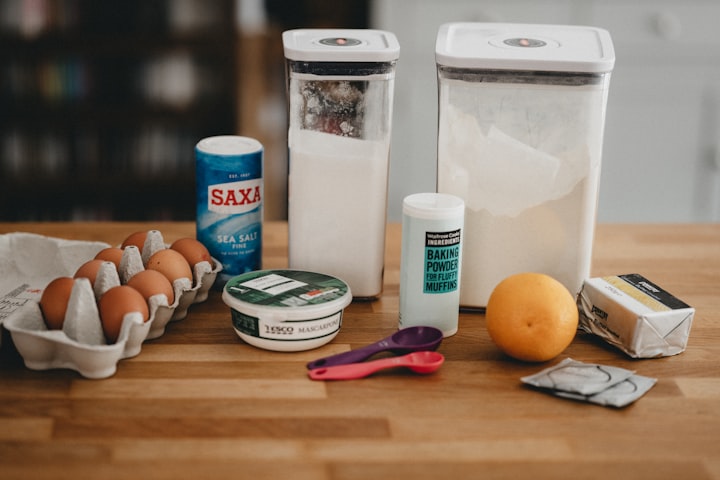5 Tips to Maintain Healthy Blood Sugar Levels
pefect blood levels

5 Tips to Maintain Healthy Blood Sugar Levels
Are you struggling with maintaining healthy blood sugar levels? If so, you're not alone. Diabetes and pre-diabetes affect millions of people worldwide, making it important to take care of your body and health. Fortunately, there are simple tips you can use to help keep your blood sugar levels in check. In this blog post, we'll explore five of the best ways to maintain healthy blood sugar levels. Read on to learn more!
1.Read the Smart Blood Sugar Book
Proven winner and constantly getting better! Dr. Marlene Merritt's Smart Blood Sugar has been the leading Blood Sugar offer since 2014. It has helped millions of people with diabetes, pre-diabetics, and even healthy people who want to maintain their blood sugar levels. It is an incredible resource that can teach you exactly how to eat right and maintain your perfect blood sugar levels. The book includes an easy-to-follow diet plan with delicious recipes, along with an exercise plan that can help you achieve your goals faster. Additionally, it includes expert advice from top medical professionals, such as diabetologists, cardiologists, endocrinologists, and other specialists.If you want this book Click Here
2.Eat a high-fiber diet
Fiber is an essential part of a healthy diet and is important for maintaining healthy blood sugar levels. Eating foods that are high in fibre can help regulate your blood sugar, as fiber slows down the absorption of glucose into your bloodstream.
The best sources of fiber come from plant-based foods such as fruits, vegetables, nuts, seeds, and whole grains. Fruits and vegetables should be eaten in abundance – aim to include at least five servings per day in your diet. Whole grains such as oats, quinoa, and brown rice are also excellent sources of fiber. Nuts and seeds like almonds, chia seeds, and flaxseeds are also high in fiber and can be added to meals for an extra boost.
In addition to eating more fiber-rich foods, it’s also important to drink plenty of water throughout the day. Water helps to flush out toxins from your body and keeps your digestive system functioning properly. Try to drink at least eight glasses of water each day.
By incorporating a high-fiber diet into your daily routine, you can help maintain healthy blood sugar levels and keep your body healthy and strong.
3.Incorporate exercise into your routine
Exercise is a key component of any healthy lifestyle, but it’s especially important for those looking to maintain their blood sugar levels. Regular exercise can help you keep your blood sugar levels stable, lower your risk of diabetes, and reduce stress.
In order to get the most benefit from exercise, it is important to choose activities that you enjoy and that fit into your lifestyle. If you are new to exercise, it is best to start slowly and gradually increase the intensity and duration of your workouts.
Here are some ideas for incorporating exercise into your routine:
• Start with a 30-minute walk every day. Not only will this help keep your blood sugar levels in check, it will also provide an opportunity for social interaction.
• Take a fitness class. From yoga to Zumba, there are a variety of options available that can help you stay motivated and have fun while working out.
• Try a home workout routine. There are plenty of online resources that provide step-by-step instructions for exercises you can do at home.
• Join a running group or sports team. Joining a group or team can help keep you motivated and accountable to others.
• Utilize technology. Use a fitness tracker to keep track of your workouts and progress.
No matter what type of exercise you decide to do, make sure to consult with your doctor before beginning a new workout routine. Exercise is an important part of managing your blood sugar levels, so find something you enjoy and stick with it!
4.Monitor your carbohydrate intake
Carbohydrates are an essential part of a healthy diet, but if you have diabetes, it is especially important to monitor your intake. Eating too many carbohydrates can raise your blood sugar levels, so it’s important to be mindful of how much you’re consuming.
Start by learning about the different types of carbohydrates and their effects on blood sugar. Simple carbohydrates, such as white bread and candy, are quickly digested and absorbed into the bloodstream, which causes a rapid rise in blood sugar. Complex carbohydrates, such as whole grain breads and starchy vegetables, take longer to digest and provide a more gradual rise in blood sugar.
It’s also important to keep an eye on serving sizes when you’re eating carbohydrates. Generally, one serving of carbohydrates is equal to 15 grams of carbs. Most carbohydrate-rich foods have a nutrition label on the packaging that can tell you the amount of carbs in each serving. If you’re unsure of the serving size, you can use a measuring cup or weighing scale to make sure you’re getting the right amount.
Finally, watch for hidden sources of carbs in your food. For example, some sauces and condiments contain added sugars that can contribute to your daily carb intake. Keep an eye out for these hidden sources of carbs and try to limit your consumption when possible.
By following these tips, you can make sure you’re getting the right amount of carbohydrates and controlling your blood sugar levels.
5.Be Careful with the amount.
One of the most important tips to keep your blood sugar levels healthy is to be aware of the amount of carbohydrates and sugars you’re consuming. Keeping track of your carbohydrate intake can help you maintain healthy blood sugar levels, as consuming too many
carbohydrates can cause your blood sugar to spike
. Eating a balanced diet is key, and being conscious of the amount of carbs you eat can help you regulate your blood sugar.
When choosing what to eat, try to include a variety of foods that are low in simple carbohydrates and high in complex carbohydrates, such as whole grains and vegetables. As far as portion control goes, aim to have small, consistent meals throughout the day. This can help keep your blood sugar levels steady and avoid sudden spikes.
It’s also important to remember to take into account hidden sources of carbs, such as added sugars found in condiments and sauces. When purchasing these items, try to look for ones that are low in sugar or sugar-free, as these can help keep your blood sugar levels stable.
By following these tips, you can help ensure your blood sugar levels stay within a healthy range. Remember that keeping track of your carbohydrate intake and eating a balanced diet are key components in maintaining healthy blood sugar levels. With just a few simple changes, you can start feeling better and more energized.
Book
https://www.digistore24.com/redir/307885/LouisB1/
Supplement Best
https://www.digistore24.com/redir/419540/LouisB1/





Comments
There are no comments for this story
Be the first to respond and start the conversation.